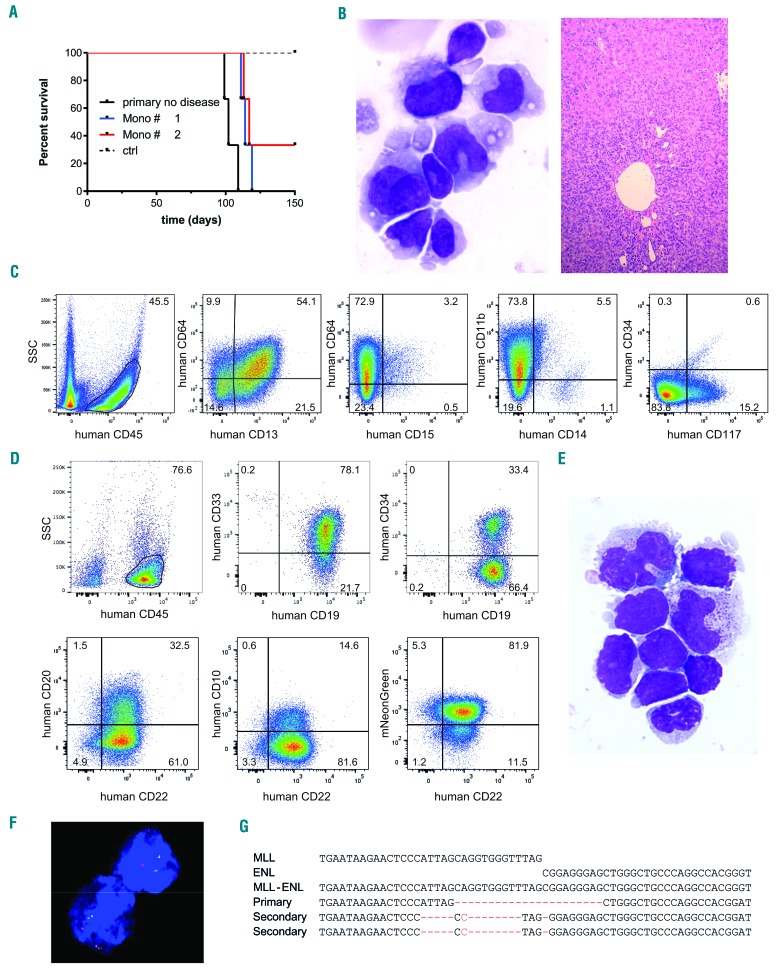Figure 4.
In vivo environment affects the oncogenic transformation of primary human hematopoietic stem and progenitor cells by t(11;19) (A) Survival of serially transplanted mice with human cell engraftment. Donor: primary recipients with [L-CRISPR-CTN(11;19)] a monocytic leukemia-like disease (Mono #1/#2), a healthy mouse with a detectable MLL-ENL breakpoint but no disease in the primary recipient, and two control donors (MLL-I9-#1 + Luc sgRNAs) (n = 3 per donor). (B) Analysis of bone marrow (BM) cell morphology (left: MGG, 1000x) and liver histopathology (right: HE, 100X) showing severe infiltration of a secondary recipient transplanted with monocytic leukemia-like disease cells. (C) Flow cytometry analysis of monocytic leukemia cells for monocytic and progenitor cell surface marker expression. (D) Flow cytometry analysis of B-ALL cells. (E) Analysis of BM cell morphology (MGG, 1000x) of a secondary recipient with B-ALL. (F) Detection of an MLL translocation with fluorescence in situ hybridization on interphase nuclei of B-ALL cells (Vysis LSI MLL probe; Abbott Laboratories). (G) Alignment of Sanger sequencing-derived genomic t(11;19)/MLL-ENL breakpoints of mice with B-ALL (Secondary) compared to the healthy primary (Primary) mouse.

